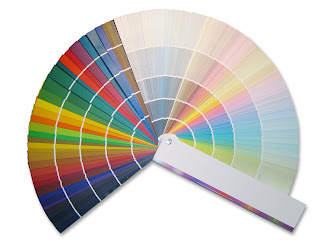 Today's display graphics are no longer considered just a sign. Very often the graphics we print for our customers in the Retail Market are thought of as art by their shoppers.
Today's display graphics are no longer considered just a sign. Very often the graphics we print for our customers in the Retail Market are thought of as art by their shoppers.Here at Artisan Colour, color management is religion! The two pillars that we live by are accuracy and consistency. Our ability to replicate colors to the highest standard is a daily task. So often Retail Graphics Buyers demand that product colors in the graphics match the merchandise. Easier said than done, eh? A number of our readers have expressed frustration when trying to produce a certain color to match a brand or product where the slightest shift spells disaster. In the print graphics field we spell disaster W-A-S-T-E!
The other pillar of color management is consistency. Have you ever had a job come in where the client is requesting different applications for the same campaign? Using multiple printers on different substrates can seem like an insurmountable task when the goal is to be consistent through out the entire campaign.
In this month's edition of Wide-Format Imaging Marc Welch describes how science has aided color management in image editing and producing uniform and precise color output no matter what devise is used.
How it's Done
The workflow is quite simple:
The first step shuts off color management on all RIPs. The RIPs will receive color-managed files, so they do not need to perform this function. However, the RIP still performs basic printer to media calibration for each media type. This involves printing a tone scale for each color, and making adjustments to optimize the match between requested and printed values. Once calibration is complete, the device is linearized.
The final step is creating a reference or “fingerprint” of the printer or press. A reference chart is printed and ‘read’ with a spectrophotometer. This allows the software to understand both what colors your printer can reproduce as well as how it produces them. Good color management software takes the printer color output, compares it to a preferred standard (GRACoL, for example) and creates a link to correlate the printer’s color capabilities to the color standard. Printers with a broader range of colors (gamut) support a better match to the color standard or original color being matched.
With the right software and training, you can deal with special circumstances. For example, some customers print the backside of polycarbonate then laminated over the print with a white film. The resulting color gamut is considerably smaller than GRACoL. In this type of case it is possible to compress the input color range to fit the available gamut.
....What once required a time-consuming, difficult to teach, and often inconsistent skill has become an efficient, productive process. Both you and your customers will take notice.
No comments:
Post a Comment